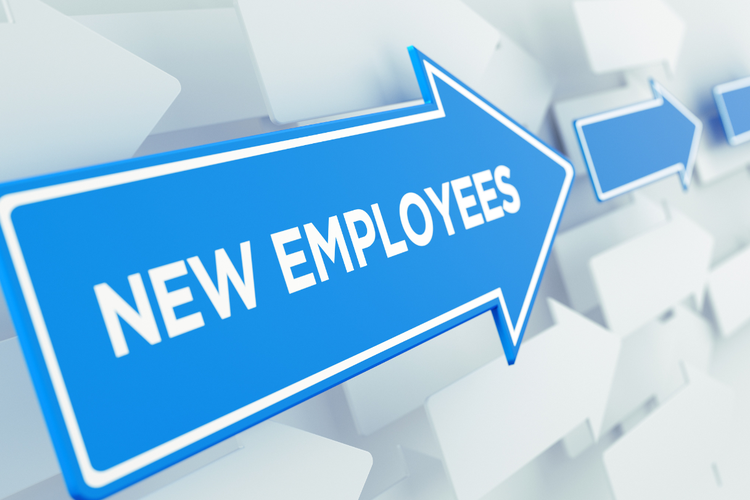
While it is important to share enough information for employees to do their job, employers should avoid overwhelming a new employee with too much information on the first day.
Orientation of new employees is important to building good relationships with employees and providing them with the tools they need to succeed. The following includes some of the best practice ideas compiled from the Human Resource Council of Canada and other employers. Organizations are encouraged to take the ideas that work best for them and compile them into a New Employee Orientation Checklist.
BEFORE THE EMPLOYEE BEGINS
Before the employee begins employment, send them a letter or email welcoming them to the organization, verifying their starting date and providing them a copy of the employee policies and procedures manual. Note that you'll dedicate time to review the manual after they commence employment.
WHEN THE EMPLOYEE BEGINS – FIRST DAY
When the employee begins employment:
The Basics:
- Introduce them to staff (new colleagues, a mentor or ‘buddy’, other managers, etc.);
- Give them a tour of the workspace. Show them where to safely put belongings (if not in their office), hang coat, store lunch and location of washrooms;
- Get them to sign any needed benefit and tax forms;
- Explain the time-recording system (if applicable);
- Provide them copies of important documents (an organization chart, last year's annual report, the strategic plan, this year's budget, and the employee's policies and procedure manual if they did not get one already);
- Ensure they have the keys, security tags, etc.;
- Clarify work time: start and finish time, lunch time and breaks, as well as absences, leave and vacation.
- Provide overview of office protocol: telephone, email, and internet.
- Review health, fire and safety procedures.
The Work:
- Provide an overview of the work expectations and schedule;
- Review job description and expected outcomes
- Identify work to be accomplished in the first days/weeks’
- Clarify performance appraisals and probationary period expectations.
Best Practices:
- Take them to lunch on the first day and invite other staff members along.
- Meet with them at the end of the day to hear any questions or comments.
AN EMPLOYEE’S FIRST WEEK
- Schedule any needed computer training, including use of passwords, overview of software and documentation, location and use of peripherals, and where to go to get questions answered.
- Meet with the new employee during the first few days of employment to review the job description again. Review any specific goals for the position and explain the performance review procedure.
WITHIN FIRST SIX MONTHS
- Have one-on-one meetings with the new employee on a weekly basis for the first six weeks.
- Discuss the new employee's transition into the organization, get status on work activities, hear any pending issues or needs, and establish a working relationship with their supervisor.
- Schedule a performance appraisal after three months to review the employee’s performance and provide guidance to help the employee succeed. If there are issues, and the employee may not pass probation, the employee and employer can discuss whether the job is the right fit for the employee.
MOVING BEYOND ORIENTATION BASICS:
Design a process, not an event
While it is important to share enough information for employees to do their job, employers should avoid overwhelming a new employee with too much information on the first day. A good orientation supports the intensive learning curve that a new employee will experience.
Make a good first impression.
Consider the experience form the employee’s perspective and then make an effort to make it fun, interesting and as simple as possible. The new employee may be new to your sector, or new to the country. Some workplace practices or norms that Canadian employees take for granted may be work reviewing. Assigning specific, meaningful work to do as soon as possible will help a new employee feel part of the team.
Don’t bury a new employee in paperwork!
Rather than hiding away a new employee to read over policies, procedures, handbooks and every report produced in the past five year, consider making the first few days of work as much about meeting people as digesting information. Set up meetings with different staff members or volunteers who can speak about the work/organization from their perspective.
Make information accessible.
An employee and book is often used in and orientation process. The handbook serves as a ready reference to the material covered during the orientation period. Today, many organizations house this type of employee resource in electronic format that is easily accessible for all employees.
Don’t forget to share workplace culture and informal practices
There are often formal and informal ‘rules’ at the workplace. Do you observe a casual Friday? What is the office dress code? Do you celebrate office birthdays? How do employees share topics at staff meetings? Who makes the coffee? Can I just walk into people’s offices or do I make an appointment? There are many unwritten ‘rules’ that guide behavior in a workplace, and sometimes these are the most difficult, yet most important, for new employees to identify on their first days on the job.

